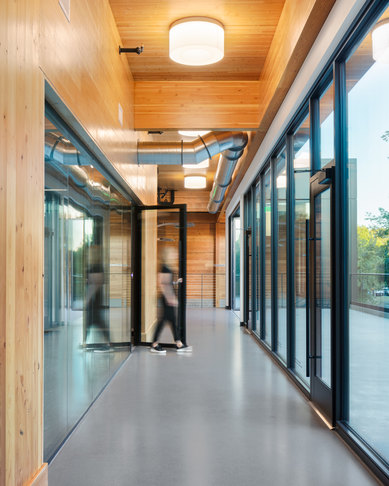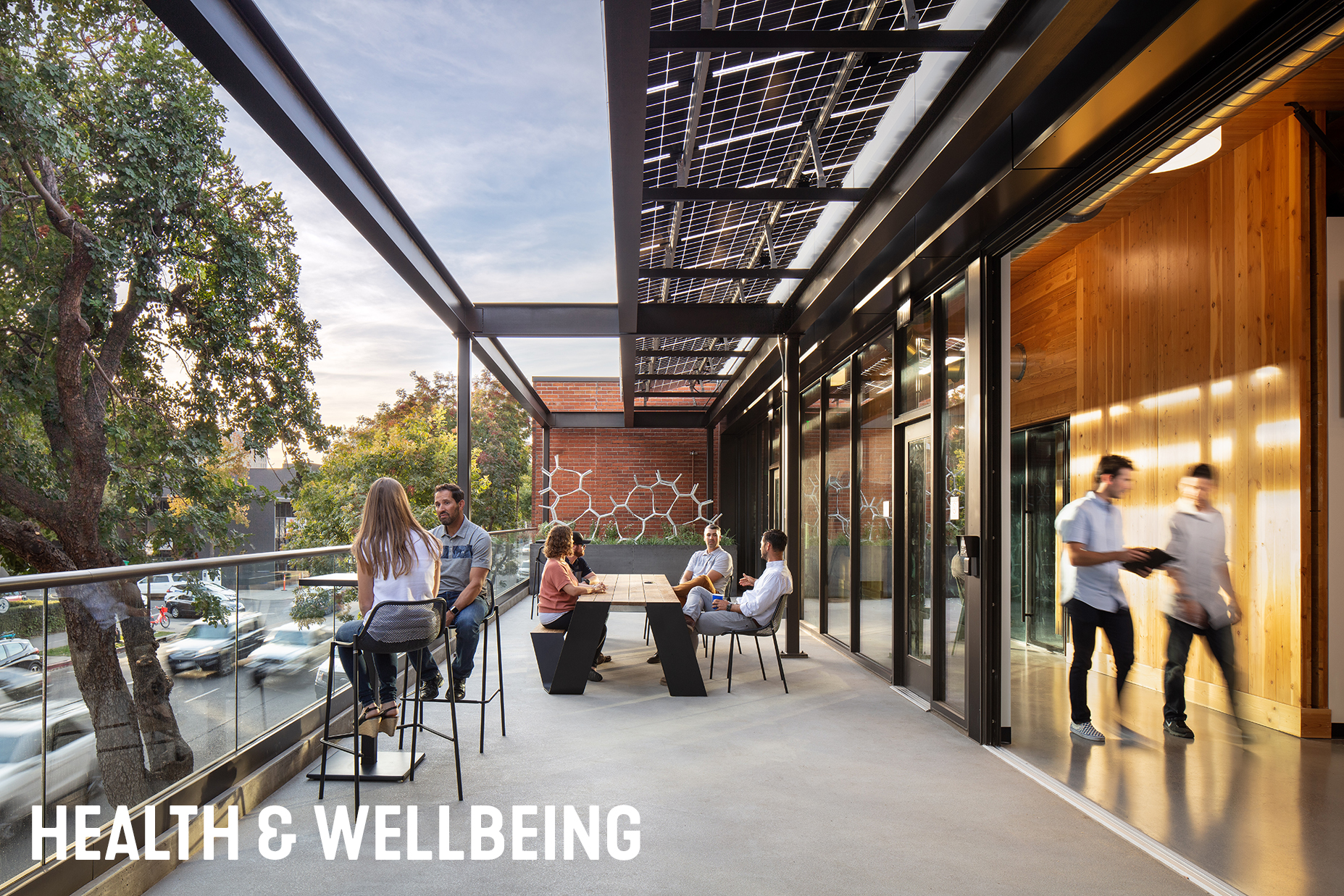Redefining the High Performing Workplace: Health & Wellbeing
Employers have a vested interest in creating a culture that emphasizes the importance of mental and physical wellness. Thirty years ago, if asked what the definition of a high performing workplace was, teams would have cited energy consumption, carbon footprint, costs per square foot, and factors related to these topics in order to measure success. As we enter a new era of work, we realize that the definition of and focus on employee wellbeing must also evolve. Creating a high performing workforce and workplace requires business leaders understand and embrace the following:
THE HEALTHY WORKPLACE IS EVOLVING
In the past, it was thought that providing a fitness center, walking trails, and a handful of healthy food options was adequate to address health concerns. While these remain important, designing to promote health and wellbeing has evolved to encompass sustainability, the integration of nature, and movement through a building. Today, designers are focusing more intently on the physiology of buildings, including greater attention to indoor air quality, access to natural light, and other factors that impact health.
DATA DRIVES DESIGN
Recent scientific studies have revealed meaningful data which enables designers to connect the impact of the environments they create to human health and wellbeing. It is increasingly important that all parties involved in the creation of built environments understand these metrics and use the data to create spaces that can enhance employees’ physical and mental wellbeing.
BE IN TUNE WITH BIOPHILIA
It is important to understand the connection between humans and nature. Next, we must explore the best ways to design buildings to connect people to nature. Providing access to daylight, views, and the ability to walk away from desks can have profound impacts on stress level, health, and wellbeing.
CULTURE IS ASSOCIATED WITH BEHAVIORS
To truly make a commitment to employee health and wellbeing, employers need to lead by example and create a culture of wellness in their organization. Designers will then study that organization’s culture, behavioral patterns of leaders and employees, and then create a physical space that supports or induces the behaviors and culture they espouse to achieve.
10% of employee absences are attributed to the lack of nature in buildings.




INTERESTED IN LEARNING MORE? CHECK OUT THE FOLLOWING ARTICLES:
Healthy Buildings. Healthy People. Healthy Bottom Lines.
An Immersion in Biophilic Design
WELL Building, A New Design Standard for Wellness
Inclusive Design & Social Resilience
Material Transparency, Part One
